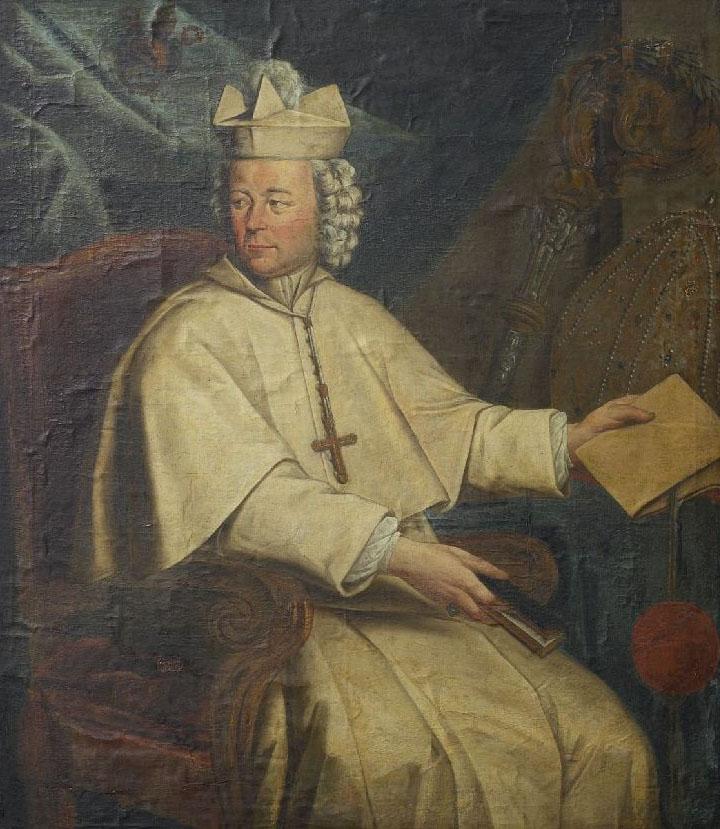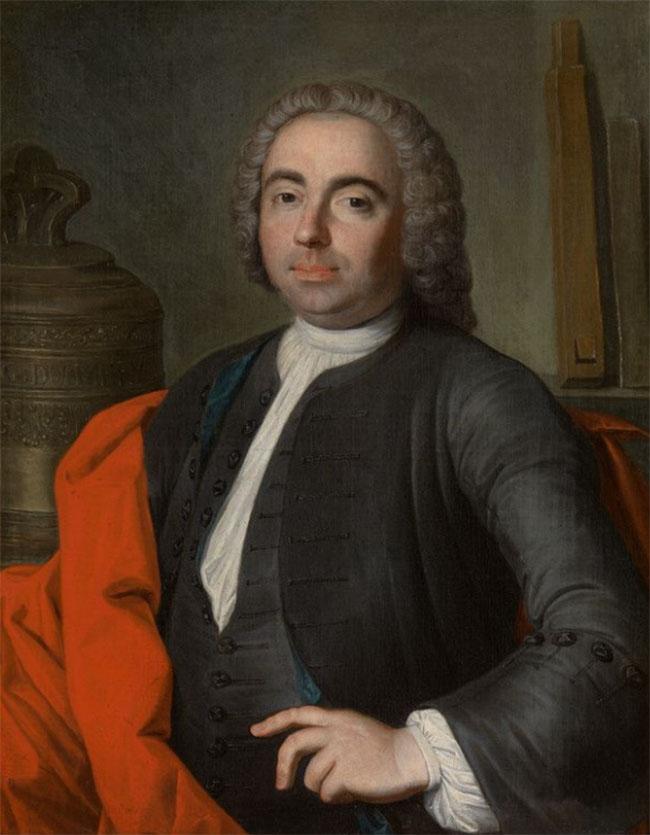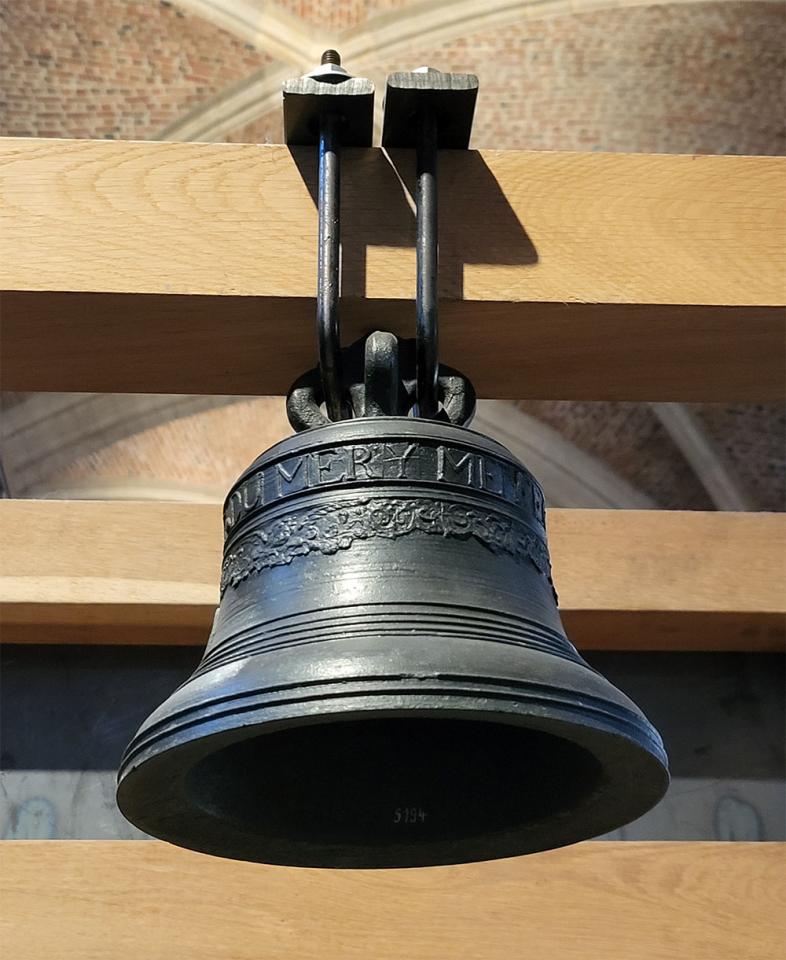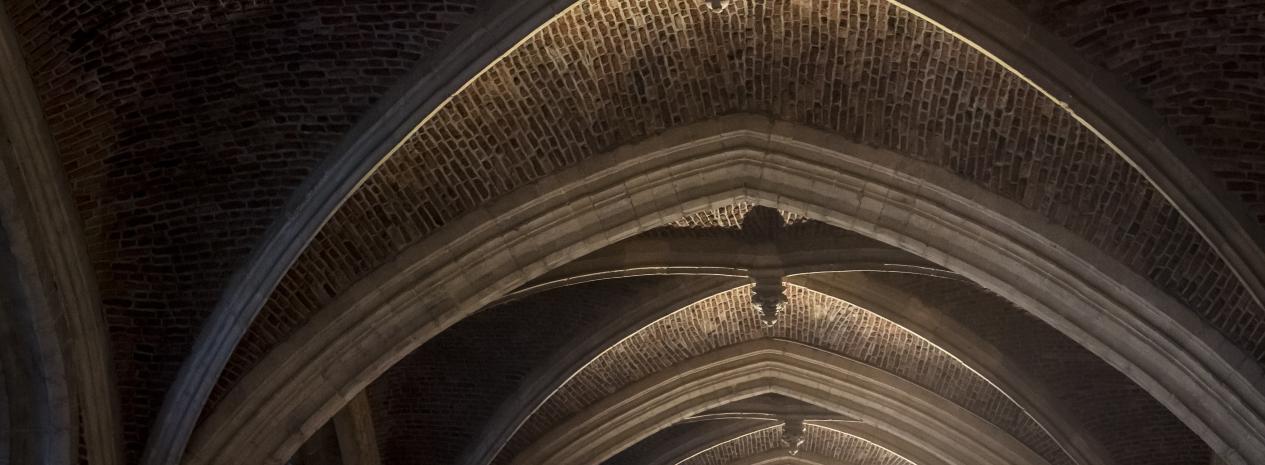Three bells for the city
In 1751, the city council of Antwerp commissioned three new treble bells to the 37-bell Hemony carillon in the Cathedral of Our Lady. This may have been under the impetus of then-carillonneur Joannes de Gruijtters. Joris Dumery produced the commission in the same year. According to De Gruijtters' tune sheets, they were only hammered in 1756, and played in the grace note. Several local notables helped finance the new bells of the Antwerp city carillon, something that still regularly happens today. Their names are engraved on the bells: J.B. Mertens, J.-C. Van de Werve and J.-A. baron Van Hove.

Portret van Johannes Chrysostomus Sammels
Dulciter et velociter
The fourth Dumery bell was cast the following year, in 1752. As far as is known, the city carillon was not extended or restored at that time. It still remains a mystery what the purpose of the fourth bell was. The decoration and inscription on the bell do however offer a clue: the coat of arms was once identified as that of the bishop, but the inscription 'Dulciter et velociter' suggests otherwise.
Thanks to museum director Timothy De Paepe and with the help of the online database of the KIK-IRPA, the inscription and coat of arms were attributed to Johannes Chrysostomus Sammels, who was abbot of St. Michael's Abbey in Antwerp around the period 1748 - 1753. Whether there is a link with the bell and the Abbey's missing carillon is still being investigated.

Portret van Joris Dumery
Dumery and his carillons
Joris Dumery learned his craft from bell-founder Alexius Jullie, who was active in Lier. Around the age of 20, he moved to Antwerp, where from 1736 he worked as an independent bell-founder together with his future father-in-law, the clockmaker Antoon De Hont.
In early 1740, he was commissioned to cast the new carillon in Bruges - the previous carillon was destroyed in a tower fire - and settled permanently in that city. In fact, De Hont was in charge of the mechanical installation of the playing drum and clockwork of the Bruges carillon. More importantly, Joannes de Gruijtters was one of the experts who came to inspect the carillon. In other words, De Gruijtters and Dumery were clearly acquainted with each other.
The fact that the Antwerp carillon scene in those days was won over by the quality of Dumery's bellfounding can be seen in subsequent Antwerp commissions for Saint James' Church and the church carillon of the Cathedral of Our Lady (1767, where de Gruijtters was also carillonneur). His fame spread quickly, for in the years that followed, Dumery supplied carillons to Zottegem (1750), Ninove (1751), Enghien (1754 / 1756), Chimay (1760) and Tielt (1772 / 1773). He also produced several hundred individual bells. After his death in 1787, his son William and grandsons Guilielmus and Jacobus continued the business until it closed its doors for good around 1850.

Masterpieces in the city carillon
The three bells for the city carillon hung in place in the tower and rung out across Antwerp for two centuries. It was only in the 1950s that two of them were replaced by Marcel Michiels Jr. They were likely transferred to the museum at that time. Twenty years later, the last Dumery example also ended up in the collection of Museum Vleeshuis following a new round of restoration. This time around, Royal Eijsbouts of Asten replaced the ten smallest bells. Of the fourth bell with an inscription, we only know that it was purchased in 1906.
Although the four bells are not the only bells by Dumery that are preserved, this small collection is still unique because the broader context in which the bells were cast and used is still known. Indeed, the three bells added to the city carillon were not the only new additions of this period. Thanks to Joannes de Gruijtters, the hand and foot keyboard of the carillon was also replaced. Not coincidentally, this object - and the tune sheets - also earned Masterpiece status.
Tribute to Dumery
Finally, the city of Bruges paid tribute to the bell-founder by renaming part of the Boeveriestraat (near Van Voldenstraat) as Joris Dumeryplein. A wooden palisade with a swinging bell, cast by Dumery, is a vibrant reminder of the bell-founder.
Flemish masterpiece
The four bells by Joris Dumery are among our masterpieces and are on the Flemish masterpiece list.


